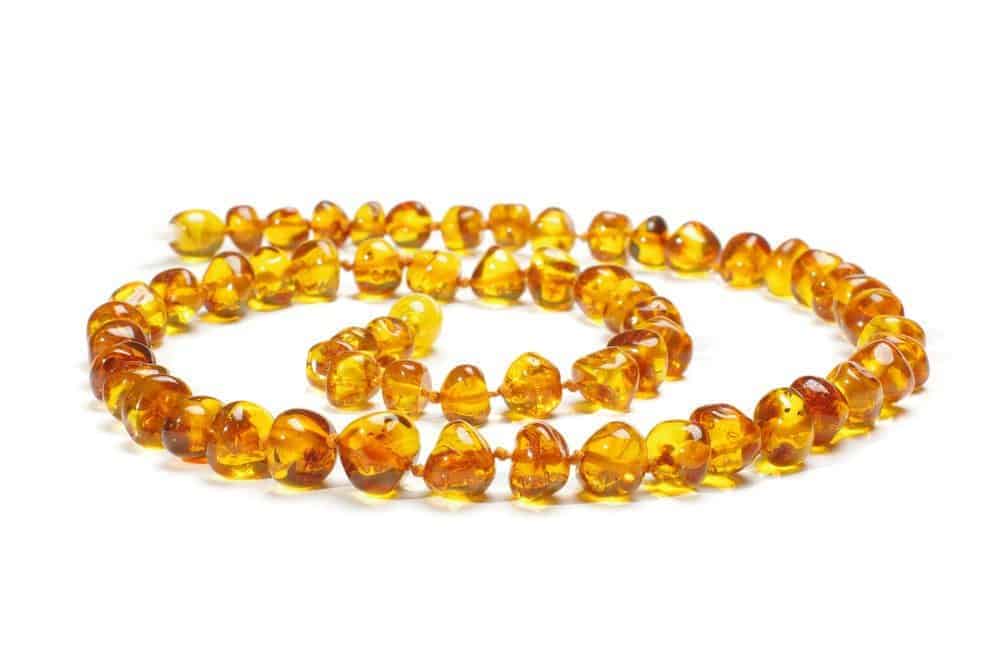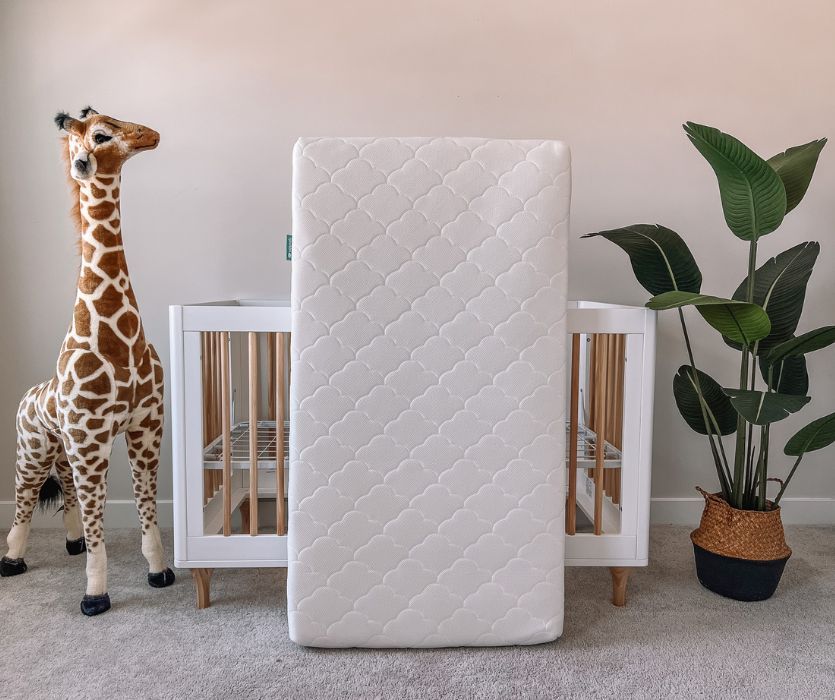These days it seems a toddler can’t throw a board book at the library without hitting someone who is wearing an amber teething necklace. Aside from being trendy, do they really serve a purpose?
First of all, let’s talk about amber and succinic acid.
Amber is basically old ass sap that oozed out of a tree somewhere in the range of 35-50 million years ago. Baltic amber, which is what teething necklaces are made of, is a special kind of amber that did its oozing from trees found in a specific geographical area, and then spent a few million years kicking around the floor of the Baltic Sea. This is important because only Baltic amber contains comparatively high levels of succinic acid, which is the ingredient people believe to be responsible for the many health benefits attributed to wearing amber.
Proponents of wearing amber claim when warmed by body heat, the succinic acid passes through the skin and into the bloodstream of your baby, and from there accomplishes a laundry list of goodness. While most commonly associated with reducing pain during teething, people also reportedly use them to help calm fussy babies, fight infection and respiratory disease, and reduce inflammation of the throat, ears and stomach.
A non-medicinal, natural, continuously effective, relatively cheap way to provide comfort to my cranky ass toddler, that is also super cute? Sign me up! Right?
Well, there are some things to consider about amber teething necklaces.
For starters, according to folks on the Internet, true Baltic amber isn’t what makes up the majority of the teething necklaces being sold today. This is problematic because only Baltic amber has enough of the critically important succinic acid in it to be effective, which means the majority of babies sporting the necklaces are just wearing tiny balls of non-special old ass tree sap.
Also complicating things, in general, it is a bad -nay- a very bad idea to wrap things around the neck or limbs of a baby. It is also frowned upon to provide them with access to things small enough to be placed in the mouth where they could be choked on, or shoved up their schnoz. A few countries have gone so far as to ban the necklaces completely because the risk of choking or death has been deemed so high. Recently, the FDA released a statement officially warning against using any kind of teething jewelry, after receiving reports of injuries and even deaths caused by strangulation.
Of course, this comes with a Baltic Sea boatload of anecdotal experiences touting how well amber has worked for parents desperate to provide comfort to their wee-ones.
So what’s a confused parent to do?
If you really want to try the necklaces, do a little research on the specific product you are interested in buying.
- Make sure the necklace you are purchasing is made from genuine Baltic amber, and has been guaranteed to have the promised amount of succinic acid in it (should be between 3 and 8%).
- Make sure the necklace has individually knotted beads, and a breakaway clasp, in case there ever is a situation where it gets caught on something and is choking your kid.
- To reduce the risk of choking, remove it during unsupervised nap, playtime, and at night.
- Make sure the necklace fits properly – it should be tight enough your little can’t squeeze a limb through, but obviously not so tight it chokes them.
Bottom line
While scientifically the evidence may be lacking, the sheer number of people who report benefits makes for a lively debate. If you do choose to put one on your child, remove it any time you aren’t directly watching them. The bottom line is, most experts strongly recommend skipping them.
Our next reco: Surprising (and Not So Surprising) Choking Hazards for Babies




Leave a Comment